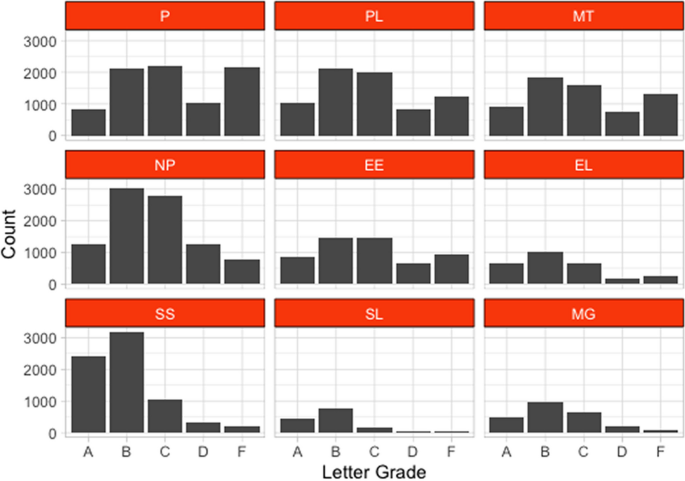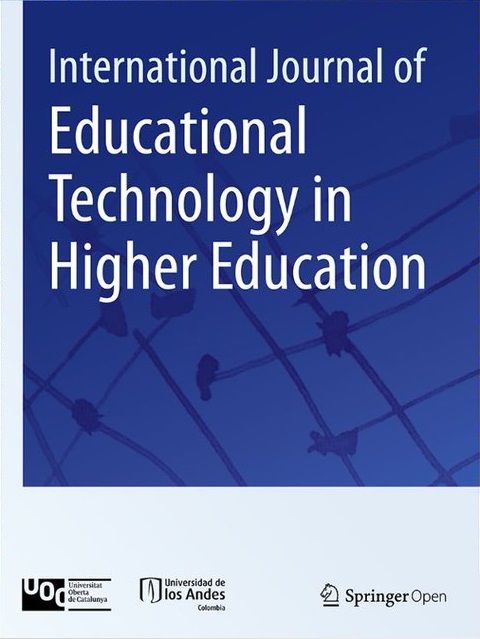使用数据挖掘和可视化方法检查学生的课程轨迹
IF 16.7
1区 教育学
Q1 EDUCATION & EDUCATIONAL RESEARCH
International Journal of Educational Technology in Higher Education
Pub Date : 2023-10-16
DOI:10.1186/s41239-023-00423-4
引用次数: 0
摘要
二十多年来,教育机构获得的关于学生职业的异构数据(如成绩分数、课程偏好、出勤记录、人口统计等)一直是教育数据挖掘(EDM)研究人员研究的一个来源。EDM研究人员主要关注学生表现的特定课程数据分析,很少在领域层面进行尝试,这可能有利于教育机构总体上衡量和提高其制度效率。我们的工作旨在通过检查学生的成绩单数据来填补这一空白,以确定与这些不同学生群体相关的相似学生群体和模式:(a)课程类别的难度水平,(b)课程轨迹的形成,以及(c)学生在不同表现群体之间的过渡。我们利用描述性数据挖掘和可视化方法分析了巴基斯坦一所私立大学1398名计算机科学本科生的成绩单数据。该数据集包括9个不同课程类别的124门课程的学生成绩单数据。最后,我们详细讨论了我们的发现、挑战和未来的工作方向。本文章由计算机程序翻译,如有差异,请以英文原文为准。

Examining students’ course trajectories using data mining and visualization approaches
Abstract The heterogeneous data acquired by educational institutes about students’ careers (e.g., performance scores, course preferences, attendance record, demographics, etc.) has been a source of investigation for Educational Data Mining (EDM) researchers for over two decades. EDM researchers have primarily focused on course-specific data analyses of students’ performances, and rare attempts are made at the domain level that may benefit the educational institutes at large to gauge and improve their institutional effectiveness. Our work aims to fill this gap by examining students’ transcripts data for identifying similar groups of students and patterns that might associate with these different cohorts of students based on: (a) difficulty level of a course category, (b) formation of course trajectories, and, (c) transitioning of students between different performance groups. We have exploited descriptive data mining and visualization methods to analyze transcript data of 1398 undergraduate Computer Science students of a private university in Pakistan. The dataset includes students’ transcript data of 124 courses from nine distinct course categories. In the end, we have discussed our findings in detail, challenges, and, future work directions.
求助全文
通过发布文献求助,成功后即可免费获取论文全文。
去求助
来源期刊
CiteScore
19.30
自引率
4.70%
发文量
59
审稿时长
76.7 days
期刊介绍:
This journal seeks to foster the sharing of critical scholarly works and information exchange across diverse cultural perspectives in the fields of technology-enhanced and digital learning in higher education. It aims to advance scientific knowledge on the human and personal aspects of technology use in higher education, while keeping readers informed about the latest developments in applying digital technologies to learning, training, research, and management.

 求助内容:
求助内容: 应助结果提醒方式:
应助结果提醒方式:


